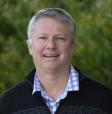

Showing 841 - 860 of 1701 results

Seafood authenticity research moves into new stage
Accurate ‘fingerprinting’ tool to verify source of origin is in development with collaborators from academia and industry.

Collaborators - Planetary Materials
We are part of the Planetary Science community in Australia

Are you PFAS compliant?
PFAS chemicals in packaging pose serious environmental and health risks, but Australia’s packaging industry is leading the way to phase them out. Backed by cutting-edge nuclear science, industry-led action is creating safer packaging solutions for all Australians.

Role at ANSTO

Role at ANSTO
Minerals expertise advances sustainable lithium ion battery production

Role at ANSTO
ANSTO’s food provenance project continues to have broad support
ANSTO expertise highlighted in a 3D IMAX film about Angkorian Empire
ANSTO radiocarbon facilities and scientists are featured in a new IMAX documentary film released in the United States.
ANSTO plastic trawling from Hobart to Sydney

Bianca Shepherd is ANSTO’s Engineering Support Workshop Manager, confidently overseeing the manufacture and fabrication of equipment and specialised parts for critical Australian scientific and landmark infrastructure.
Progress on hydrogels
Research confirms heating can increase strength of a type of hydrogel.
Initial findings from an IAEA project on the status of the medical physics profession in diagnostic radiology and image guided interventional procedures in the Asia–Pacific published
A research paper that shares early results from an IAEA funded project evaluates the state of medical physics in diagnostic radiology and image-guided procedures in the Asia-Pacific region has been published in Physical and Engineering Sciences in Medicine.
Renewed agreement with Japanese research organisations to bolster cooperation in neutron science and technology
ANSTO renewed its Memorandum of Understanding (MOU) with the Japan Proton Accelerator Research Complex (J-PARC) operated by the High Energy Accelerator Research Organisation (KEK) and Japan Atomic Energy Agency (JAEA). Now broadened to include their partner Comprehensive Research Organization for Science and Society (CROSS), the signing took place early in the year and a celebratory workshop was held late July.
A breakthrough in all-organic proton batteries for safer, sustainable energy storage
Researchers from the University of New South Wales have developed a new type of rechargeable battery that uses protons as charge carriers, offering a safer and more environmentally friendly alternative to conventional lithium-ion batteries.

Role at ANSTO
Nuclear Materials Research and Technology
ANSTO addresses key scientific questions in the nuclear fuel cycle for both the current generation of nuclear reactors and future systems.
